June 12 to June 18
In November 1945, an article appeared in the Shin Sheng Pao (新生報) newspaper written by then-Taipei Mayor Yu Mi-chien (游彌堅) that denounced Japanese culture with rhetoric that aligned with the newly-arrived Chinese Nationalist Party’s (KMT) goal of promoting the use of Mandarin and adoption of Chinese culture.
Note that nuhua (奴化, literally enslavement) was commonly used by the KMT back then to refer to the Japanization of the Taiwanese people, which they hoped to reverse as quickly as possible.
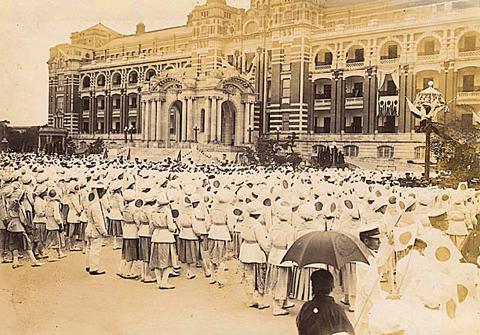
Photo courtesy of Wikimedia Commons
“Under the high-pressure rule of imperialism, Taiwanese have been deeply poisoned by the germs of Fascism over the past 51 years,” Yu wrote. “This poison cannot be eradicated in one day, but where do we begin? How can we reverse our nuhua values to help the new government develop Taiwan?”
DE-JAPANIZATION
On June 16, 1946, the Taiwan Culture Promotion Association (台灣文化協進會) was established with Yu as chairman to “propagate the Three Principles of the People and democracy, transform Taiwanese culture and promote the use of Mandarin.”
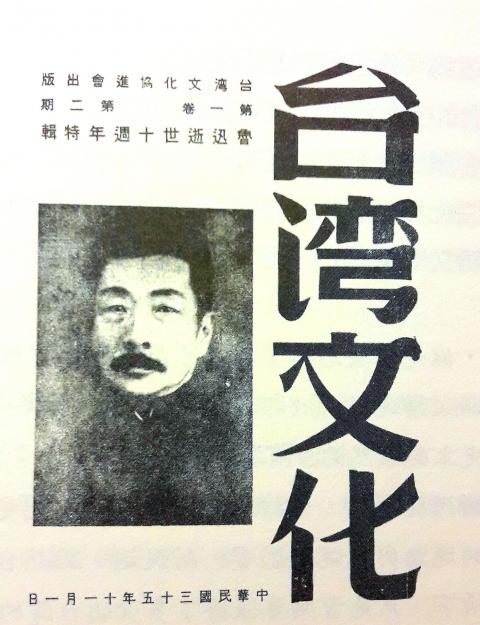
Photo: Han Cheung, Taipei Times
The association targeted almost all facets of culture, from art, music and dance to education and scholarship, vowing to work with Taiwan’s cultural elite to expunge all traces of colonialism.
Plans to eradicate Japanese culture were detailed in March 1945 by future governor-general Chen Yi (陳儀), and carried out immediately after the KMT takeover. He announced at the end of 1945 his wishes of having all teachers and students somewhat proficient in Mandarin with an understanding of Chinese history within one year.
“The Japanese carried out Japanization education, and now we shall counter it by sinicization,” Chen said two months later. The first Mandarin textbook was printed that year, with the first lesson being “We are the youth of China.”
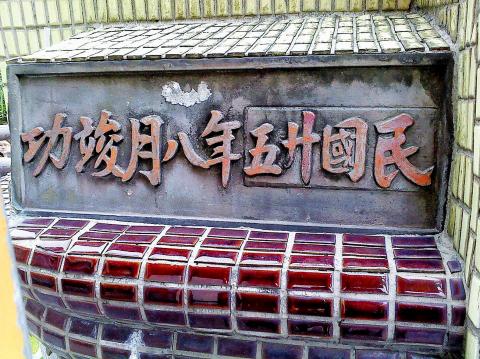
Photo courtesy of Wikimedia Commons
According to Uprooting Japan, Implanting China (去日本化, 再中國化) by Huang Ying-che (黃英哲), at that time more than 70 percent Taiwanese spoke Japanese as their main language, and almost nobody under the age of 30 could read Chinese. Some Mandarin promoters suggested having people revert to Hoklo (also known as Taiwanese) first, then having them learn Mandarin. Ironically, many teachers recruited from China couldn’t even speak Mandarin fluently, and several newspapers wrote editorials criticizing this.
The next step was media control. Huang writes that by the end of 1946, 475,111 books that were positive toward Japan or negative toward the KMT were destroyed, and all Japanese films were banned.
The Taiwan Cultural Promotion Association played an active role over the following two years, organizing seminars and displays of Chinese music, literature and art as well as Taiwanese history. There were also several panel discussions, including one led by Yu that explored how to promote Chinese music to “resolve the unhappiness of Taiwanese who had no songs to sing since Japanese songs were banned.”
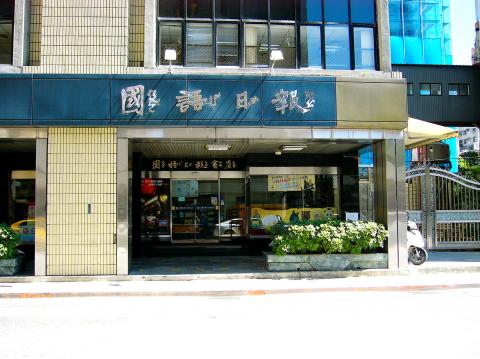
Photo courtesy of Wikimedia Commons
The association even sought to change people’s clothing style, which Huang cites as an example of how ambitious and thorough the association’s plans were. However, its activities were cut short by the 228 Incident as many intellectuals became victims of the White Terror. By the 1950s, the government’s focus had expanded beyond eradicating Japanese culture, seeking to also stamp out Hoklo, Hakka and Aboriginal elements.
THE RISE OF GATCHAMAN
It appears that Japanese culture returned to Taiwan with gusto in the 1970s and 1980s with its popular cartoons and comics, but Huang Chia-wei (黃佳暐) writes in The Acceptance and Rejection of Taiwan for Japanese Culture In Period of Martial Law (戒嚴時期台灣對日本文化的迎與拒) that Japanese culture never truly went away despite the government’s efforts.
First of all, the initial enthusiasm among Taiwanese toward learning Mandarin and Chinese culture quickly faded with their disillusionment with the KMT after the 228 Incident.
“Those who were eager to rid themselves of Japanese colonialism actually reverted to their old way of life,” he writes. “On the surface, they submitted to the KMT’s policies, but in their private life, whether intentionally or not, they retained many of their colonial ways.”
Huang writes that Japanese entertainment continued to enter Taiwan during the 1950s, although in de-Japanized form. For example, the authors’ names would be changed to Chinese, and even comic book characters who wore Japanese traditional clothing were redrawn with Western suits and dress. It was the same with music, giving rise to Japanese tunes with Taiwanese lyrics attributed to fictional composers with Chinese names.
As the economy improved in the 1970s, Taiwanese consumers were no longer satisfied by local leisure products, turning toward Japan since the country’s products and culture were already familiar in Taiwan. Huang writes that that generation was conflicted because, on the one hand, they learned about Japanese atrocities in school, but often had parents who preferred to speak Japanese. This led to a mental separation of Japanese culture and Japanese history, making it mentally acceptable to “hate Japanese people but love Japanese comics.”
Although the KMT re-upped its anti-Japanese rhetoric after Japan cut ties with them in favor of China in 1972, it couldn’t stop television channels from showing Japanese cartoons, although they were also de-Japanized through meticulous editing.
When China Television Company debuted Gatchaman in December 1977 causing a huge craze among children, there was no going back. Japanese pop culture was here to stay.
Taiwan in Time, a column about Taiwan’s history that is published every Sunday, spotlights important or interesting events around the nation that have anniversaries this week.
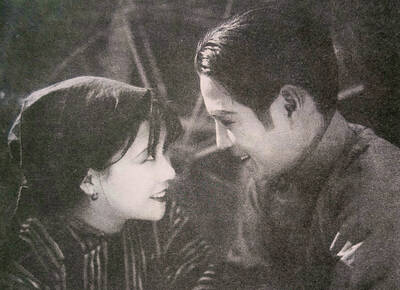
March 10 to March 16 Although it failed to become popular, March of the Black Cats (烏貓進行曲) was the first Taiwanese record to have “pop song” printed on the label. Released in March 1929 under Eagle Records, a subsidiary of the Japanese-owned Columbia Records, the Hoklo (commonly known as Taiwanese) lyrics followed the traditional seven characters per verse of Taiwanese opera, but the instrumentation was Western, performed by Eagle’s in-house orchestra. The singer was entertainer Chiu-chan (秋蟾). In fact, a cover of a Xiamen folk song by Chiu-chan released around the same time, Plum Widow Missing Her Husband (雪梅思君), enjoyed more

Last week Elbridge Colby, US President Donald Trump’s nominee for under secretary of defense for policy, a key advisory position, said in his Senate confirmation hearing that Taiwan defense spending should be 10 percent of GDP “at least something in that ballpark, really focused on their defense.” He added: “So we need to properly incentivize them.” Much commentary focused on the 10 percent figure, and rightly so. Colby is not wrong in one respect — Taiwan does need to spend more. But the steady escalation in the proportion of GDP from 3 percent to 5 percent to 10 percent that advocates

From insomniacs to party-goers, doting couples, tired paramedics and Johannesburg’s golden youth, The Pantry, a petrol station doubling as a gourmet deli, has become unmissable on the nightlife scene of South Africa’s biggest city. Open 24 hours a day, the establishment which opened three years ago is a haven for revelers looking for a midnight snack to sober up after the bars and nightclubs close at 2am or 5am. “Believe me, we see it all here,” sighs a cashier. Before the curtains open on Johannesburg’s infamous party scene, the evening gets off to a gentle start. On a Friday at around 6pm,
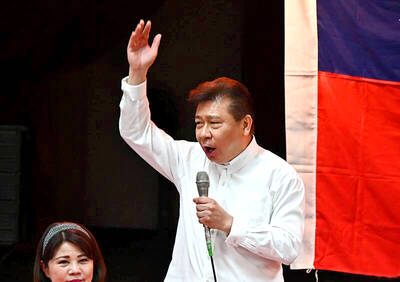
A series of dramatic news items dropped last month that shed light on Chinese Communist Party (CCP) attitudes towards three candidates for last year’s presidential election: Taiwan People’s Party (TPP) founder Ko Wen-je (柯文哲), Terry Gou (郭台銘), founder of Hon Hai Precision Industry Co (鴻海精密), also known as Foxconn Technology Group (富士康科技集團), and New Taipei City Mayor Hou You-yi (侯友宜) of the Chinese Nationalist Party (KMT). It also revealed deep blue support for Ko and Gou from inside the KMT, how they interacted with the CCP and alleged election interference involving NT$100 million (US$3.05 million) or more raised by the